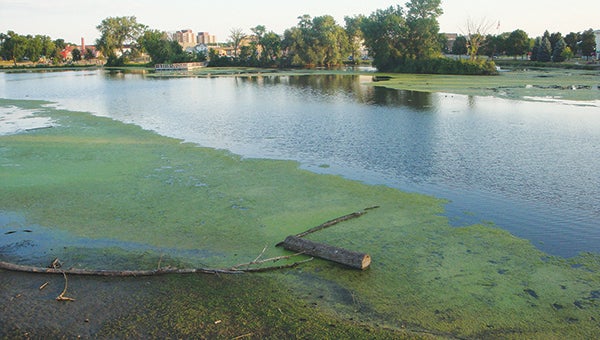Green abundant in local waterways
Published 8:11 am Monday, August 27, 2012
Austin’s East Side Lake and Downtown Mill Pond have taken on greener hues this summer and are worse than normal because of unusually dry conditions. Filamentous algae is causing green pond scum, which has been abundant at both waterways.
The filamentous alga starts its life cycle on the bottom until the hair-like fibers trap enough air to float to the surface, creating the green mats, said Matt Taylor, a watershed technician with the Cedar River Watershed District and Mower County Soil and Water Conservation District.
“Aquatic plants and events like this are naturally occurring,” Taylor said. “Ideally, you’d like to see more stable, submerged aquatic plants over the slim mats of filamentous algae.”
This summer’s rise in algae on local waterways has much to do with significantly low amounts of rainfall that has increased the residence time of water behind the dams that create East Side Lake and the Downtown Mill Pond, Taylor said. Water from streams and rivers generally are rich in nutrients, he said. If that nutrient-rich water is immobile and not cycling downstream, however, that situation creates conditions prime for algae growth.
“Then you add in the warmer weather in July, and the conditions were there for more algae growth,” Taylor said.
Water samples by the CRWD this year have shown a general decrease in the levels of phosphorous and nitrogen, Taylor said. Those nutrients are key elements in plant growth, with phosphorous generally being transported by sediment, which has a tendency to settle out in slower-moving parts of rivers, he added. The sediment and nutrients can remain in these areas for years, Taylor said, and are great for plant growth when conditions are right.
Chemical or mechanical treatment of these areas might improve the aesthetic look for awhile but it does not prevent the plants from coming right back, Taylor said. Aside from aesthetics, the algae can cause problems for aquatic life if there is a rapid die off of the plant material, he said. This can cause localized drops in dissolved oxygen and lead to aquatic life deaths.



